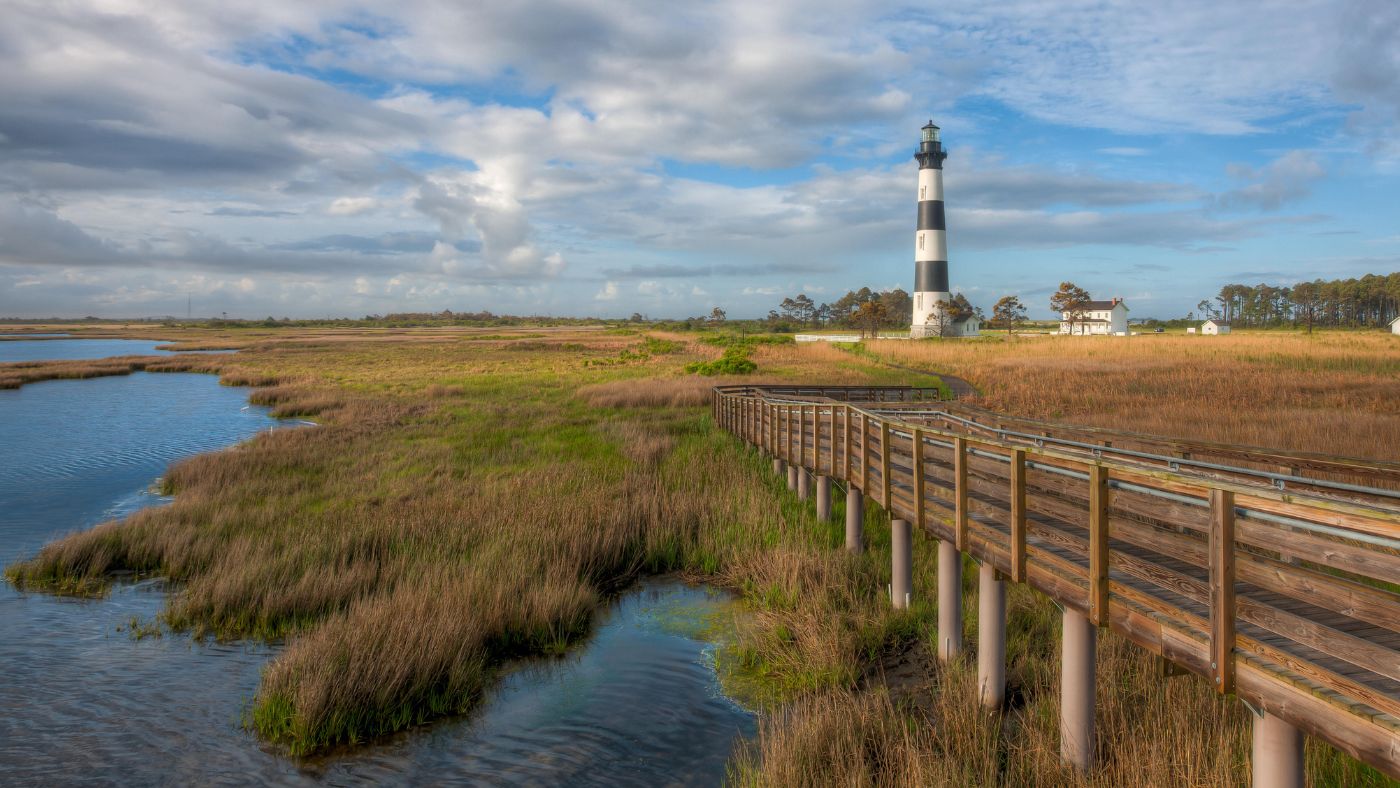Trip of the week: the elemental beauty of the Outer Banks in North Carolina
This ‘fragile chain’ of barrier islands are well-known for their rich folklore and ‘postcard sights’

A “fragile chain” of barrier islands that shadows the mainland coast of North Carolina for 200 miles, the Outer Banks are well-known in the US for their “sandy, windswept beauty” and rich folklore. And yet they still feel “quiet” and “remote”, says Jacqui Agate in The Daily Telegraph – and make for a wonderful escape from the pressures of modern life. Algonquian-speaking tribes had lived here for 1,000 years when, in 1587, the English established a colony on Roanoke Island – their first in the New World – that later mysteriously vanished. The islands became a playground of the pirate Edward Teach – better known as Blackbeard – and in 1903, the Wright brothers achieved the first controlled, powered flight here.
In the south, the Cape Hatteras National Seashore stretches for 70 miles, its national park status prohibiting development. There are no “tacky souvenir shops” – just miles of woodland, golden beaches and “grass-flecked” dunes. At the park’s southern tip lies Ocracoke, where Blackbeard was slain by Lieutenant Robert Maynard and his crew in 1718, his severed head “hung on Maynard’s bowsprit as a grotesque trophy”. In Ocracoke Village, tree-lined Howard Street is named for the Howard family, descendants of the pirate’s quartermaster. Today, they run Village Craftsmen, “a charming shop filled with curios” made by local artisans. Heading north, you might stop at the Wright Brothers National Memorial, where there’s an interesting museum. Drawn here from Ohio partly by the islands’ steady wind, the brothers then fell in love with the area.
The land where the Lost Colony of 1587 stood is now the Fort Raleigh National Historic Site, and another small museum. Still further north, development has “boomed”, but even here there are “postcard sights”, not least the wild horses of Currituck County, most likely the descendants of working horses that escaped from a Spanish expedition in the 1500s.
The Week
Escape your echo chamber. Get the facts behind the news, plus analysis from multiple perspectives.

Sign up for The Week's Free Newsletters
From our morning news briefing to a weekly Good News Newsletter, get the best of The Week delivered directly to your inbox.
From our morning news briefing to a weekly Good News Newsletter, get the best of The Week delivered directly to your inbox.
Sign up for the Travel newsletter for destination inspiration and the latest news and trends.
A free daily email with the biggest news stories of the day – and the best features from TheWeek.com
-
 The best food books of 2025
The best food books of 2025The Week Recommends From mouthwatering recipes to insightful essays, these colourful books will both inspire and entertain
-
 Art that made the news in 2025
Art that made the news in 2025The Explainer From a short-lived Banksy mural to an Egyptian statue dating back three millennia
-
 Nine best TV shows of the year
Nine best TV shows of the yearThe Week Recommends From Adolescence to Amandaland
-
 Winter holidays in the snow and sun
Winter holidays in the snow and sunThe Week Recommends Escape the dark, cold days with the perfect getaway
-
 The best homes of the year
The best homes of the yearFeature Featuring a former helicopter engine repair workshop in Washington, D.C. and high-rise living in San Francisco
-
 Critics’ choice: The year’s top 10 movies
Critics’ choice: The year’s top 10 moviesFeature ‘One Battle After Another’ and ‘It Was Just an Accident’ stand out
-
 A luxury walking tour in Western Australia
A luxury walking tour in Western AustraliaThe Week Recommends Walk through an ‘ancient forest’ and listen to the ‘gentle hushing’ of the upper canopy
-
 Joanna Trollope: novelist who had a No. 1 bestseller with The Rector’s Wife
Joanna Trollope: novelist who had a No. 1 bestseller with The Rector’s WifeIn the Spotlight Trollope found fame with intelligent novels about the dramas and dilemmas of modern women


